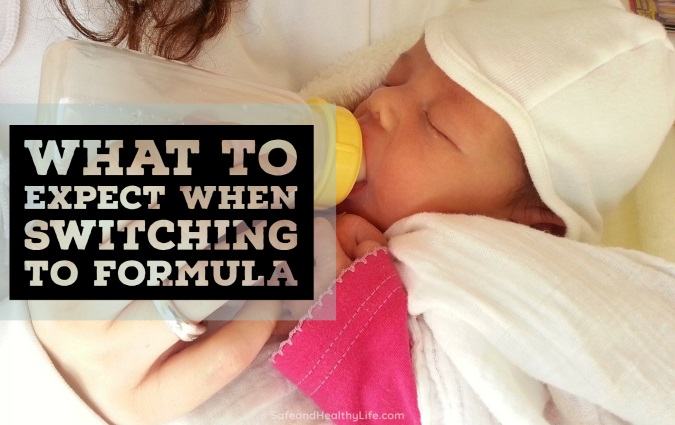
Thinking about switching formulas?
Have you and your doctor decided that your child will benefit from switching formula?
Here is what to expect from switching from a baby formula that doesn’t seem to be giving your baby the best possible nutrition.
Reasons to Switch Formula
There are a few reasons why you might need to switch formulas. If your doctor tells you that your baby needs more iron, you might need to switch to a high iron baby formula.
Other reasons are usually from an intolerance to the formula that is currently being used. Gastrointestinal upset, including vomiting, diarrhea, and frequent crying that seems to be because of abdominal pain (also can be determined if crying accompanies a lot of gas, or if the baby’s belly seems slightly distended or tender at times).
Gastrointestinal symptoms might point to an allergy to the current formula. Other signs of an allergy to the formula is a rash or hives after drinking the formula.
It is essential to let the child’s doctor do an exam if any of these problems arise and to get their advice on if you should switch, and also to what kind of formula they recommend.
How To Safely Switch Formula
The worst-case scenario when switching formulas is making a baby feel worse or stop feeding because the second choice of the formula is worse than the first.
The easiest way to switch is to switch to a kind of formula most like the one you are discontinuing use of. It will produce the least problems, generally.

Photo Credit: Unsplash
This means: if your baby is taking cow’s milk-based formula, the easiest transition will be to another cow’s milk formula, but perhaps one that has an easier to digest formulation.
Cow’s milk (bovine) based formulas are given to most children who take the formula and who have no health problems.
If you can’t figure out what kind of formula you have, ask your doctor to tell you, and bring a sample of the current formula for the doctor to look at to make sure you have the right kind of formula for your baby’s needs.
Some people find that just switching brands, but using the exact formulation they were using before in a different brand, is enough to solve a problem with indigestion or a possible allergy.
Types Of Formula
Here are the basic types of formulas on the market. Once again, staying with the same type of formula and switching brands is usually the easiest first step for you to switch formulas.
Talk with your doctor about the best path to take.
- Bovine or milk-based formula
- Goats milk-based formula
- Soy-based formula
- Low-Lactose formula
- Hypoallergenic formula
Set Up A Switching Schedule
By slowly introducing the new formula over time and carefully observing your baby’s reaction to it, you can safely switch without a lot of trauma.
On day one, mix 75% old formula, 25% new formula. On day two, mix 50% old formula, 50% new formula. On day three, mix 75% new formula, 25% old formula. On day four, try 100% new formula.
Watch the baby carefully and determine if there is a worse reaction, or if the baby is feeding better with fewer problems.
If you have to switch to a different type of formula, such as from cow’s milk-based to goat’s milk-based, make the transition more gradual, over more days, adding a little bit more each day until you reach 100% of the new formula – watching your baby very closely for any problems the entire time.
Check out Milk Drunk for more tips and tricks about feeding that precious baby in your life.
About The Author:
Mike is a health editor with a degree in Journalism and Social Communications, currently writing for several USA & UK publications. He is specialized in articles around health tips, workout plans, and other nutrition-related topics. His main aim is to help health charities to raise awareness on campaigns about misunderstood or commonly misdiagnosed conditions.




